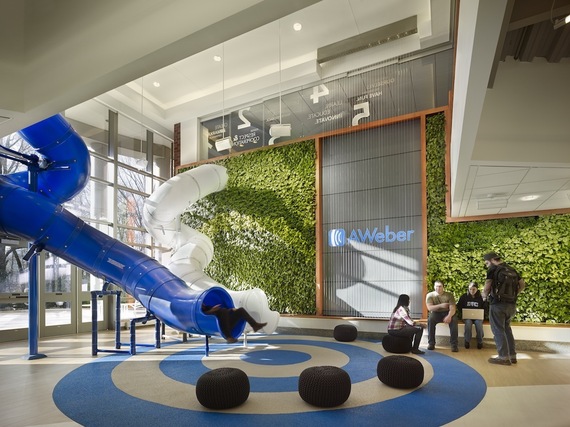
Show me an organization that hires "employees" to achieve company goals and I'll show you a company that's low on morale and high in turnover. Sure, this is a rather blunt statement to make, but I'm glad I have your attention.
It's not that having employees is necessarily a bad thing. But it does stunt your ability to create a more accountable, open and honest work environment. Plus you're limiting your company's ability to create an environment where people want to go everyday, give their best effort and, most importantly, tell others about it.
When you factor in the components of a thriving company it's crucial that you construct an army of team members, not just stable employees. So, what's the difference?
After more than 20 years of working with various personalities and building successful teams, I've learned that you can spot the difference within minutes of meeting them.
Here are the three major differences between the team members you want and the employees you have.
1. We vs. I
The simplest notion of what a great 'team' is, is what differentiates team members the most. A team member focuses on a 'we' mentality that includes creating remarkable experiences with others in the company and with existing and potential customers. Team members are focused on finding and providing solutions; whenever, however and without hesitation. They also make sure there is a shared, common goal.
On the other hand, your employees will express a 'get to it tomorrow' attitude and will act as if the company and related issues that need to be addressed with urgency will always be there. In outward conversations, employees will let you know that "I couldn't get to it" or that "I didn't think it was that important." Oh yes, employees love making excuses.
Internally, employees are consistently, hyper-focused on weighing their efforts based on how the outcome can benefit them, their status, their resume, even their Twitter follower count.
Just ask someone on your team what their biggest accomplishment was last month and it becomes clear almost immediately. If the answer has no alignment or mention of how they worked with a team to accomplish the goal, then you've identified your first great employee.
2. Passions vs. Projects
Team members are always seeking to learn and develop themselves within their role. They get excited to interact with others in cross-functional teams and will often be visually emotional about tapping into something that aligns with their passions. While this might seem to counter the "I vs. We" point above, not so. Team members may seek to develop themselves, but they know how to strategically align their personal passions with organizational goals.
Employees love a checklist. No more. No less. Their view of the workplace, and their interaction with others are largely aligned with, and governed by, the comfortable confines of projects. Things are linear and there is rarely any excitement or learning that is sought out from start to finish.
3. Linchpins vs. Cogs
Seth Godin's book Linchpin has been a must read for any team that I've developed or managed. Your team will act noticeably different after reading this book...at least the team members will. Linchpins are irreplaceable. These are team members that you cannot envision going through a day, week or project cycle without. Or, put differently, your company would be worse off without them.
Then there are cogs. Everyone loves a cog because it's dependable to do the same thing --repeatedly -- with little push back. And if that cog breaks, you can replace it immediately and expect the exact same results. While it is true that everyone is replaceable, employees know it and don't care -- as it's shown by their effort or lack thereof.
As you evaluate or build your team, it should become clear that seeking out your team members then developing your employees to become more like them is paramount. Sure, hundreds of companies are functioning with a group of employees. However, the opportunity missed by not embracing and developing employees to team members will impact company performance and profitability.
After communicating the differences between employees and team members, try introducing an exercise where no one refers to each other as "employees." You'd be surprised how quickly you can identify your true team members. This exercise could be your first step in transforming your company culture to one that is more accountable, enjoyable and a hub for getting things done. Your team members will thank you for it.

